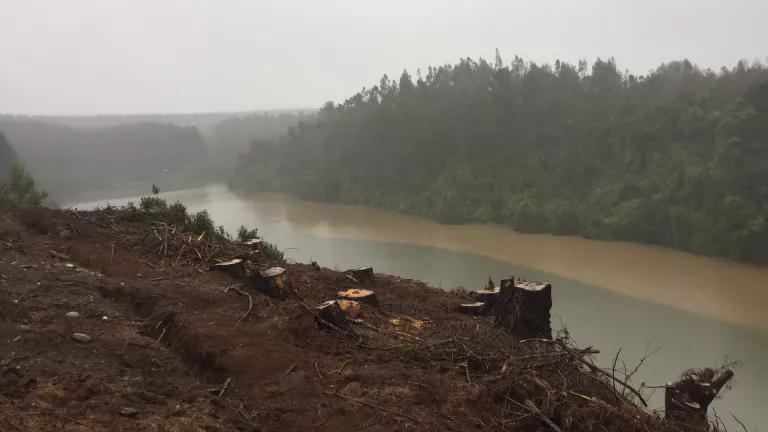21st Century Energy Just Got a 21st Century Leasing Process

The Department of Interior’s new rule modernizes the wind and solar leasing process
This week the Bureau of Land Management (BLM) issued a long awaited rule designed to modernize how solar and wind projects will be permitted on federal lands. This new “leasing rule” will establish a competitive auction for solar and wind energy resources. The rule will also adopt an incentives structure that will reward clean energy projects with financial credits and streamlined permitting for those permits that elect to lease in prescreened areas or zones, a process that has been demonstrated to greatly reduce environmental conflicts while conferring greater economic certainty to developers.
Almost five years in the making, the promulgation of a competitive leasing rule is a far cry from where the BLM was eight years ago. In 2009, the BLM simply did not have a systematic approach to develop renewable resources on federal lands. Part of BLM’s struggle was due to the fact that applications for projects were considered on a first-come, first-served basis regardless of whether a project was financially or environmentally viable. This process hamstrung the BLM, and in fact the agency had not approved a single solar energy project at the beginning of 2009. Thankfully the BLM started to shift away from this flawed process, and embraced a smarter approach to permitting that identified environmental issues early in the planning and permitting phases, while also focusing development in areas with viable renewable energy resources.
The shift away from a project-by-project planning approach, along with the finalization of the Western Solar Plan in November 2012—that directed development to solar energy zones in an orderly fashion—helped to greatly accelerate the permitting of renewable projects on BLM managed lands. Since January 2009, the BLM has approved 57 clean energy projects, totaling 15 gigawatts of newly permitted clean power. In addition, 33 of these permits are either operational or currently under construction and will soon be producing clean energy on BLM lands.
The progress achieved by the BLM over the last eight years occurred despite the fact that the BLM’s renewables program has operated under an antiquated administrative construct. This is due to the fact that Congress has prescribed that onshore federal wind and solar resources were to be managed under Title V of the Federal Land Policy and Management Act, which advises that permits to lease these resources are to be treated as linear-right-of-ways (ROWs). A linear “right-of-way” under Title V is a temporary conveyance whose administrative underpinnings date back to the 19th century. In essence a ROW was used to permit linear or temporary infrastructure including roads, ditches, and railways, or in more recent history, the Burning Man event in Nevada. Agency discretion to modify these permits was an inherent part of the ROW construct, granting the agency needed flexibility to move and/or modify ROW permits when circumstances dictated.
Given that a ROW does not convey a right, but merely a privilege, the BLM retains a great deal of administerial latitude in reserving the right to modify, suspend, relocate or even terminate (under certain prescribed conditions) a ROW permit. But the right-of-way regulations did not anticipate the technological needs nor the sheer scale associated with the generation of utility scale solar and wind resources, nor the permanency associated with such investments. Hence, solar and wind developers have been severely disadvantaged by the fact that the BLM retains broad latitude to potentially modify investments made by renewable energy developers. Given the substantial and permanent nature of utility scale renewable infrastructure, such a level of regulatory uncertainty undermines the efforts to further scale renewables on federal lands.
In contrast, the management of federally owned fossil fuels such as oil and gas—derived from longstanding mineral law—has established that leases confer a compensable right or interest once issued, which cannot be summarily terminated without due cause on part of the managing agency. From a purely financial perspective, a “mineral lease” holds greater attraction than a ROW given the financial and temporal certainty that is provided by possessing such an interest.
The other practical difference between a mineral lease and a ROW is the fact that mineral leases are required to pay a royalty. In contrast, the largest financial obligation of a ROW permit is associated with a rental. Royalties, from NRDC’s perspective, are a superior way to track and assess projects given that they are technologically neutral and only assess power that is generated. The beauty of the Wind and Solar Competitive Leasing Rule is partly attributable to the fact that the BLM recognized the inadequacy of the current ROW configuration and made an effort to restructure the renewables permitting program by replicating processes that been proven to be a successful for other energy systems that have been historically managed by the BLM.
The most obvious example of how a leasing rule process can benefit renewables was evidenced by BLM’s highly successful Dry Lake Solar Energy Zone outside of Las Vegas, Nevada. The agency’s decision to embrace a competitive leasing framework and auction in a designated low-conflict zone area, allowed the BLM to secure nearly $6 million in bids from solar developers in 2014. Those winning bids were permitted in less than half the average time and were able to secure power purchase contracts that will produce some of the cheapest electricity on the planet. The lessons learned from this pilot auction are now being applied to the final leasing rule.
The BLM should be applauded for their willingness to recognize deficiencies within the agency’s antiquated system to manage clean energy. By proposing fixes to that system the BLM are ensuring that the permitting of clean energy will occur in a far more efficient manner, provide the taxpayer with a fair return, and help direct development into zones which will help safeguard sensitive environmental resources from the impacts associated with development while also combating the impacts from climate change.



